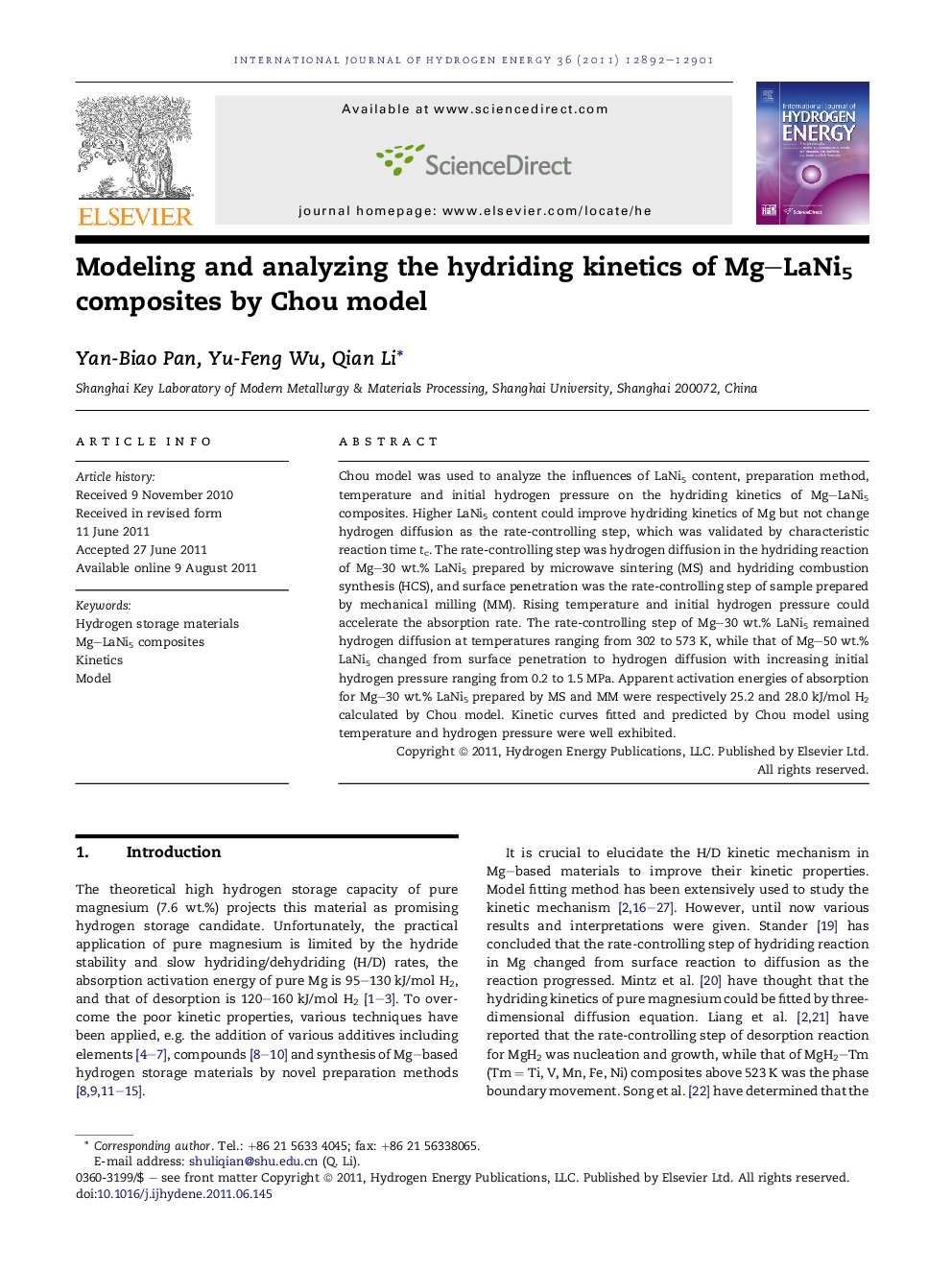| Article ID | Journal | Published Year | Pages | File Type |
|---|---|---|---|---|
| 1271953 | International Journal of Hydrogen Energy | 2011 | 10 Pages |
Chou model was used to analyze the influences of LaNi5 content, preparation method, temperature and initial hydrogen pressure on the hydriding kinetics of Mg–LaNi5 composites. Higher LaNi5 content could improve hydriding kinetics of Mg but not change hydrogen diffusion as the rate-controlling step, which was validated by characteristic reaction time tc. The rate-controlling step was hydrogen diffusion in the hydriding reaction of Mg–30 wt.% LaNi5 prepared by microwave sintering (MS) and hydriding combustion synthesis (HCS), and surface penetration was the rate-controlling step of sample prepared by mechanical milling (MM). Rising temperature and initial hydrogen pressure could accelerate the absorption rate. The rate-controlling step of Mg–30 wt.% LaNi5 remained hydrogen diffusion at temperatures ranging from 302 to 573 K, while that of Mg–50 wt.% LaNi5 changed from surface penetration to hydrogen diffusion with increasing initial hydrogen pressure ranging from 0.2 to 1.5 MPa. Apparent activation energies of absorption for Mg–30 wt.% LaNi5 prepared by MS and MM were respectively 25.2 and 28.0 kJ/mol H2 calculated by Chou model. Kinetic curves fitted and predicted by Chou model using temperature and hydrogen pressure were well exhibited.
► A comparative study on the experimental data and theoretical analysis by Chou model. ► Effects of LaNi5, preparation way, temperature and hydrogen pressure were studied. ► Apparent activation energy was calculated by Chou model. ► We analyzed the hydriding kinetics by the calculated characteristic reaction time.
